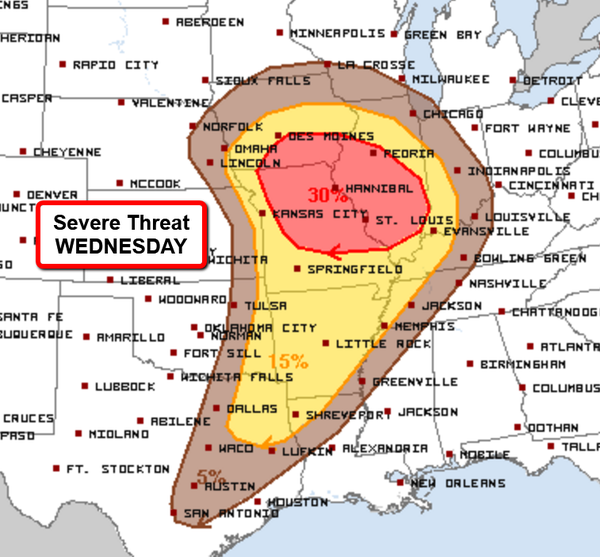Watch Out For Damaging Winds: Fast-Moving Storms

Table of Contents
Understanding Fast-Moving Storms and Their Wind Potential
Fast-moving storms, characterized by their rapid speed and intense wind gusts, encompass several types of severe weather phenomena. These include derechos, which are widespread, long-lived wind storms; downbursts, which are localized, intense downdrafts of air; and, of course, tornadoes, known for their violently rotating winds. While tornadoes are often associated with the most extreme wind speeds, derechos and downbursts can also produce damaging winds capable of causing significant destruction.
-
Damaging Wind Speeds: Wind speeds exceeding 58 mph (93 km/h) are generally considered high winds, capable of causing significant damage. Extreme winds, reaching speeds above 74 mph (119 km/h), can be catastrophic. The specific wind speed required to cause damage varies depending on the structure's resilience and the duration of the high winds.
-
Atmospheric Conditions: The formation of damaging winds in fast-moving storms is influenced by several atmospheric conditions. These include strong temperature and moisture gradients, atmospheric instability, and the presence of a strong jet stream. These factors contribute to the development of powerful downdrafts and intense wind shear, which propel high-speed winds across the affected area.
-
Unpredictable Nature: A key challenge in dealing with fast-moving storms is their unpredictable nature. Their rapid movement and sudden intensification make accurate forecasting difficult, often leaving communities with limited warning time. This unpredictability highlights the importance of being prepared for severe weather at all times.
Identifying Warning Signs
Recognizing the warning signs of an approaching fast-moving storm is vital for timely action. Look for visual cues such as:
- Dark, ominous clouds often accompanied by a sudden drop in temperature.
- A rapid and significant shift in wind direction and speed.
- Loud rumbling sounds, indicative of strong winds and approaching storm systems.
It is crucial to monitor weather alerts and warnings issued by the National Weather Service (NWS) or your local meteorological agency. These services provide timely updates, including watches and warnings, allowing you to prepare and take appropriate action.
The Impact of Damaging Winds
High winds associated with fast-moving storms can inflict widespread damage across various sectors.
-
Structural Damage: Buildings, particularly those with weaker construction, can suffer significant damage from strong winds. This can range from broken windows and damaged roofs to complete structural failure.
-
Downed Power Lines: High winds often cause power lines to snap, leading to widespread power outages and the risk of electrocution.
-
Uprooted Trees: Mature trees can be uprooted or broken, causing damage to property and posing a serious hazard to life and limb.
-
Flying Debris: Loose objects, such as signage, debris, and construction materials, become deadly projectiles in high winds, capable of causing injury or death.
-
Risks to Human Life and Safety: Damaging winds pose a significant threat to human life and safety, causing injuries, fatalities, and widespread displacement.
-
Economic Impact: The economic consequences of wind damage are substantial. Property repair costs, business interruption, and the cost of emergency response efforts add up to billions of dollars in losses after major storm events.
-
Historical Events: Numerous historical events illustrate the destructive power of damaging winds. The derecho that swept across the Midwest in 2012, for example, caused widespread damage and power outages across multiple states.
Assessing Risk in Your Area
Evaluate your vulnerability to damaging winds based on your location and the characteristics of your property. Factors to consider include:
- Proximity to forested areas: Trees can fall during high winds causing significant damage.
- Age and construction of your building: Older buildings may be more susceptible to wind damage than newer, more robust structures.
- Presence of loose objects: Ensure all outdoor items are securely fastened.
Safety Precautions and Protective Measures
Preparing for and responding appropriately to damaging winds is paramount.
-
Emergency Plan: Develop a comprehensive emergency plan for your household that includes evacuation routes, meeting points, and emergency contact information. Prepare an emergency kit with essential supplies such as water, food, a first-aid kit, flashlights, and batteries.
-
Securing Your Property: Before a storm hits, take steps to secure your property. Trim trees and shrubs near your home, and secure all loose outdoor objects like furniture, trash cans, and debris. Reinforce any vulnerable areas of your home such as windows and doors.
-
Safety Guidelines During a Storm: Stay indoors during a storm and avoid windows. Seek shelter in a sturdy interior room, away from windows and exterior walls. Monitor weather updates and heed all warnings.
-
Post-Storm Safety: After the storm passes, exercise caution when assessing the damage. Avoid downed power lines and be aware of potential hazards such as broken glass, debris, and unstable structures. Report any damage to the appropriate authorities.
Protecting Your Home and Family
Specific measures for protecting your home include:
- Windows: Reinforce windows with storm shutters or tape.
- Doors: Ensure exterior doors are securely locked.
- Roof: Inspect your roof for any vulnerabilities and make repairs as necessary before a storm.
Effective family communication is essential. Establish a communication plan for checking in on family members during and after the storm.
Conclusion
Fast-moving storms present a significant threat due to their potential for generating damaging winds. Understanding the risks, preparing adequately, and taking swift action during a storm are crucial for minimizing harm. The unpredictable nature of these storms emphasizes the need for constant vigilance and preparedness.
Call to Action: Stay informed about severe weather forecasts and heed warnings issued by your local meteorological agency. By taking steps to prepare for and respond to damaging winds from fast-moving storms, you can significantly improve your chances of staying safe and minimizing potential losses. Remember, being prepared is the best defense against damaging winds and protecting your family from severe weather.

Featured Posts
-
 Pro D2 Biarritz Lasbh Un Match De Mental
May 20, 2025
Pro D2 Biarritz Lasbh Un Match De Mental
May 20, 2025 -
 Matt Lucas And David Walliams Cliff Richard Musical The Unexpected Obstacle
May 20, 2025
Matt Lucas And David Walliams Cliff Richard Musical The Unexpected Obstacle
May 20, 2025 -
 Eurovision 2025 Ranking The Finalists From Best To Worst
May 20, 2025
Eurovision 2025 Ranking The Finalists From Best To Worst
May 20, 2025 -
 Avauskokoonpano Julkistettu Kamara Ja Pukki Vaihdossa Friisin Johdolla
May 20, 2025
Avauskokoonpano Julkistettu Kamara Ja Pukki Vaihdossa Friisin Johdolla
May 20, 2025 -
 Jutarnji List Fotografije S Premijere Slavni Redatelji Glumci I Voditelji
May 20, 2025
Jutarnji List Fotografije S Premijere Slavni Redatelji Glumci I Voditelji
May 20, 2025
Latest Posts
-
 Klopps Future Uncertain Agents Comments On Real Madrid Interest
May 21, 2025
Klopps Future Uncertain Agents Comments On Real Madrid Interest
May 21, 2025 -
 Little Britain Revival Matt Lucas Responds To Future Inquiries
May 21, 2025
Little Britain Revival Matt Lucas Responds To Future Inquiries
May 21, 2025 -
 Why Did David Walliams Leave Britains Got Talent
May 21, 2025
Why Did David Walliams Leave Britains Got Talent
May 21, 2025 -
 Klopps Agent Addresses Real Madrid Links What He Said
May 21, 2025
Klopps Agent Addresses Real Madrid Links What He Said
May 21, 2025 -
 Little Britains Future Matt Lucas Addresses Revival Speculation
May 21, 2025
Little Britains Future Matt Lucas Addresses Revival Speculation
May 21, 2025
